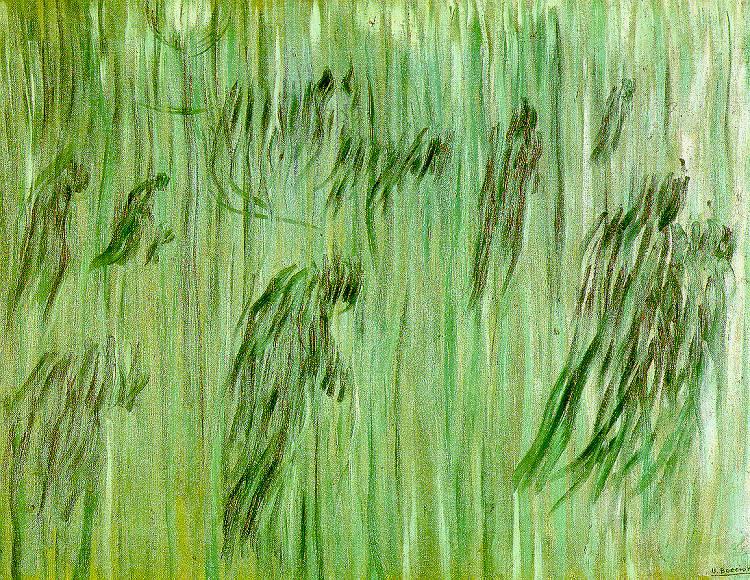Description
The work "moods (study): those that remain" by Umberto Boccioni, created in 1911, is an intense and emotional representation that encapsulates the artist's concerns about the human condition in a time of transformation and modernity. Boccioni, a pioneer of futurism, stood out for his interest in the interrelation of the movement, energy and dynamism of modern life. This piece, along with its counterparts "those who leave" and "those that arrive", is part of a trilogy that explores the experience of the trip and the separation, deeply resonant themes during the age of change that was the first half of the century XX.
In "those who stay", the composition offers a fragmented and almost caleidoscopic vision of space and human beings, providing a sense of agitation that reflects the emotional state of the characters. The structure of the painting leads us to think of multiple planes of existence, where the perspective breaks and the subjects seem to be intertwined with their environment. The figure in the center, which occurs in a state of introspection or confusion, is surrounded by a turbulent atmosphere that translates into curved and energetic lines, creating a strong movement effect.
The use of color is equally remarkable; Dark and off tones predominate, interrupted by brighter sparks of light that seem to highlight the contradictory emotions of the characters. Brown, black and intense blue nuances contribute to a gloomy environment, which contrasts with the vivacity of forms, suggesting an internal conflict. Faces are schematic and their expressions are difficult to discern, which can be interpreted as a representation of alienation and loss of identity in a constant change.
The theme of the work is aligned with the concerns of futurism about speed and modernity, but also reflects human vulnerability. Boccioni is interested in presenting a characteristic mood of the time: uncertainty and anxiety about social and technological changes. The fragmentation of the figures in the painting can not only be interpreted as a visual representation of the rupture of the collective experience, but also as an exploration of the ephemeral of the human connection in tumultuous times.
Boccioni, like other futuristic artists, wanted to break with the traditions of academic art. In his search for new ways to represent reality, he used techniques that reflect the immediacy and flow of time, essential characteristics of the futuristic movement. It is important to mention that the work is not only a simple study of feelings, but also a conceptual exploration of space and time, characteristics that Boccioni worked throughout his career.
"Moods (study): those who remain" is erected as a testimony of Boccioni's ability to merge his poetic vision with the visual language of futurism, making this work a fundamental piece to understand not only his work, but also the art of the first part of the twentieth century. The feelings of anguish and loss, as well as the exploration of the human being in a changing social context, remain relevant, and place Boccioni in the avant -garde of a markedly historical and artistic era.
KUADROS ©, a famous paint on your wall.
Hand-made oil painting reproductions, with the quality of professional artists and the distinctive seal of KUADROS ©.
Art reproduction service with satisfaction guarantee. If you are not completely satisfied with the replica of your painting, we refund your money 100%.

